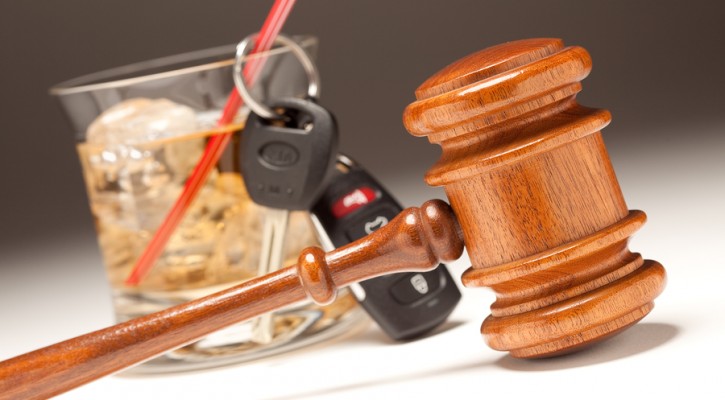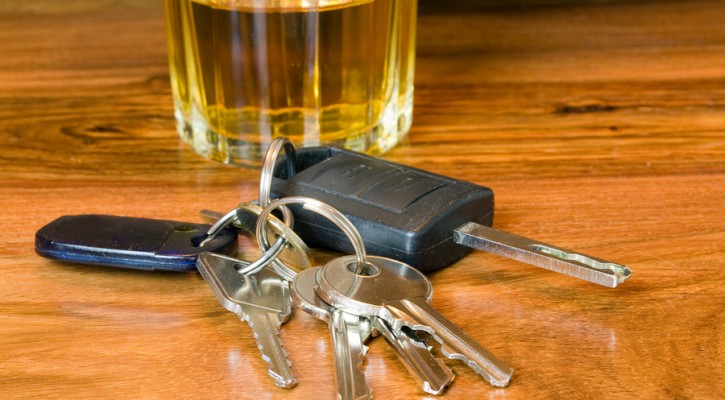Category Archive: Drunk Driving

Teenage Drivers See Affects of Drinking & Driving Firsthand
December 5, 2006
Teen drivers are learning firsthand just how damaging “one stupid mistake” can be, especially when that stupid mistake is drinking and driving. Students in Anne Arundel County in Maryland participate in a twice yearly “Schools in the Courts” program, which is presented in partnership with the county District Court and The RESPECT Foundation. School officials believe the few hours the students spend in the courtroom just may be the most important schooling they receive in all of their high school years.
Now in its fifth year, the Schools in the Courts program brings students together for four hours in a courtroom, where they are talked to by guest speakers who generally are people involved in fatal drinking and driving accidents. They are also given the opportunity to view informational videos, such as a documentary following the lives of men and women who were convicted of drinking and driving as young adults, and how their lives unfolded from there. The District Court Judge narrates, and then changes into his robe and allows the young drivers to view justice taking place as suspects are brought through for their sentencing.
The students are reminded that they are in a high risk group for becoming offenders, and on the other side of the law. Statistics from 2005 showed that three in five teens drove too fast, three in five had trouble with aggressive drivers, one in five ran a stop sign, and two in five will be involved in an accident before they graduate high school. The sobering statistics show the importance that these teen drivers make smart decisions, putting themselves, their futures, and others out of harm’s way.
The Judge reminded these students that “one stupid mistake” has taken the lives of many, and will continue to do so, but that at this point in time, right now, they have the choice to make the right decisions and not regret having made that mistake. Those who are facing the consequences of drinking and driving wish they could take it back, erase the mark against their records, but it can’t be done. The lesson learned from Schools in the Courts is that mistake is just not worth it.
Car Accident Claims Life of One Teen
July 5, 2006
Samantha Lyons-Dauck, 19, of Oglesby, Il was killed and the driver, 19-year-old Jared Goskusky of Tonica, was life-flighted to OSF St. Francis Medical Center where he is in serious condition after a one car rollover accident in the early morning hours of Friday, June 16.
It’s still unclear why the car left the roadway just before 5 a.m., and friends fear it could be alcohol related. Source: hoinews.com
Safe Driving Lesson Learned
The first thing to be affected by alcohol is your judgment. When you drink, both your thinking and your reasoning become impaired. You become less likely to consider the consequences of your actions. You underestimate the risks of being on the road, and overestimate your ability to tolerate alcohol. The fact that you are judging the situation from an impaired mindset leads one to make a decision that could be dangerous, as you then make the “impaired decision” to get behind the wheel. The choice to get behind the wheel in this case was affected by alcohol, and the consequences were not considered.
After your judgment, the next thing alcohol affects is your reaction time. You become physically slower and less alert. It takes you longer to hit the brake but, because your judgment is impaired, you’re not likely to increase your following distance in order to compensate. You process information slower, which affects your perception of traffic situations.
Finally, alcohol affects your vision. It relaxes the muscles that focus and move the eyes, causing your vision to become distorted. Your perception of distance is affected. You have a hard time judging how close you are to other vehicles, road signs or traffic signals. Your pupils take longer to adjust to changes in light, so you’re more vulnerable to being blinded by the glare of headlights. Your eye muscles may even relax to the point that you can’t focus and your vision becomes fuzzy and you see a double image. Alcohol also affects peripheral vision or the area around your eyes but not directly in front of you. This is how we perceive lights, shadows, and motion. Peripheral vision area is needed when driving; as you travel down the road the guy on the bike might be beside the road prior to pulling in front of you, but with a diminished field of vision, combined with a lack of reaction time, the result could be tragic. Either of the two affected areas alone could have been a problem, but when combined, the potential is deadly.
When you drink, your bad driving habits become more pronounced. Imagine yourself on the road after having one drink. If a person runs out in front of your car, can you stop in time? After one drink, your motor skills have been affected. Your ability to think and see has clearly diminished. After two or three drinks, your decision-making skills are seriously hampered, your attention span decreases and you take longer to think and longer to react. What if a child chases a ball out into the street? Will you be able to react and stop in time?
This post is an excerpt from a recent edition of the Safe Driving Teen Monthly Bulletin. Each month the National Safety Commission publishes the bulletin for teens and parents designed to improve teen driver behavior, attitude, skills, and experience. Subscription Details
Signs of Impaired Driving
June 29, 2006
When you drive, remember that there may be impaired drivers on the road with you.
Sometimes it may not be obvious that the driver is impaired. Never assume that other drivers see you or that they can understand and predict your next course of action. Even if the driver sees you, he or she may not have time to respond, or might make the wrong move.
Watch for signs of impaired driving, such as:
- driving too fast or too slow
- drifting in and out of a lane or straddling lanes
- driving without headlights on at night
- stopping for no apparent reason
- tailgating other drivers
- using the turn signal inconsistently and/or making abrupt turns.
If you see someone driving erratically, increase your following distance and stay a safe distance away from the vehicle.
This post is an excerpt from a recent edition of the Safe Driving Teen Monthly Bulletin. Each month the National Safety Commission publishes the bulletin for teens and parents designed to improve teen driver behavior, attitude, skills, and experience. Subscription Details

One alcohol-related fatal crash every 31 minutes
June 28, 2006
The National Highway Traffic Safety Administration estimates that alcohol was involved in 39 percent of fatal crashes and in seven percent of all crashes in 2004. The 16,694 fatalities in alcohol-related crashes during 2004 represent an average of one alcohol-related fatality every 31 minutes. An estimated 248,000 persons were injured in crashes where police reported that alcohol was present – an average of one person injured every approximately every two minutes.
Drinking alcoholic beverages and using other drugs is widely accepted in our society. Drinking and other drug use is often portrayed as glamorous and sophisticated in the media. Yet the use of alcohol and other drugs can be very costly when combined with driving. Many collisions involve drivers who are under the influence of alcohol or other drugs; the costs include property damage, legal problems, injury and death.
The effects of alcohol use vary from person to person even when the amount of alcohol used is equal. Though the effects and severity effects vary from person to person, alcohol affects everyone who uses it. The demands of the driving task are so great that every driver should be in the best condition possible. A driver cannot afford to increase the risks associated with driving by having his or her skills reduced by alcohol. Even the best drivers are affected if they drink alcohol.
Impaired drivers risk their lives and the lives of others. If you drink and drive, you could injure or kill someone in an alcohol-related collision even if you are not legally intoxicated. The emotional destruction of one impaired-driving collision could extend to people you would never have imagined would be affected. And, of course, the emotional consequences to you as the driver in that crash would be devastating as well.
This post is an excerpt from the June edition of the Safe Driving Teen Monthly Bulletin. Each month the National Safety Commission publishes the bulletin for teens and parents designed to improve teen driver behavior, attitude, skills, and experience. Subscription Details
